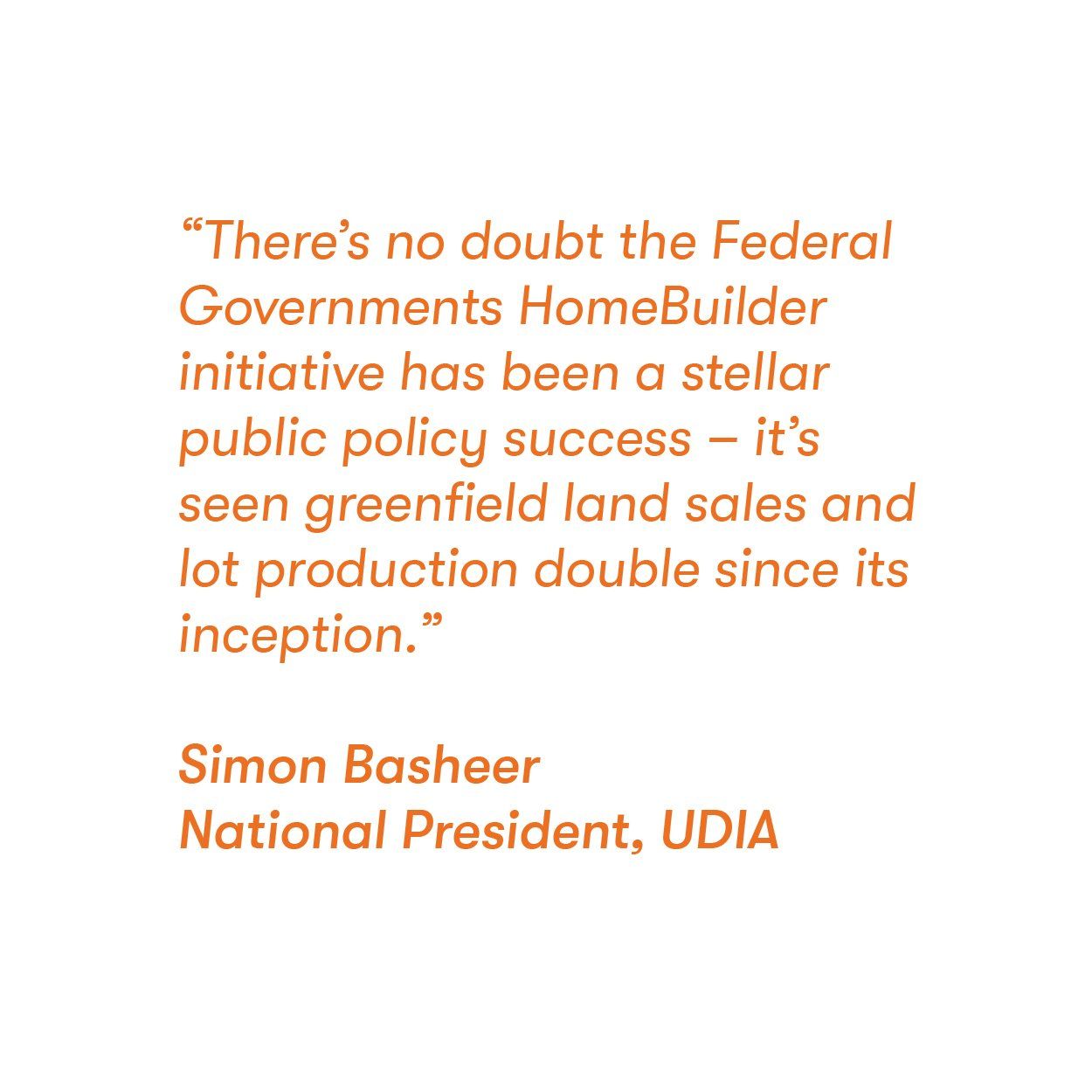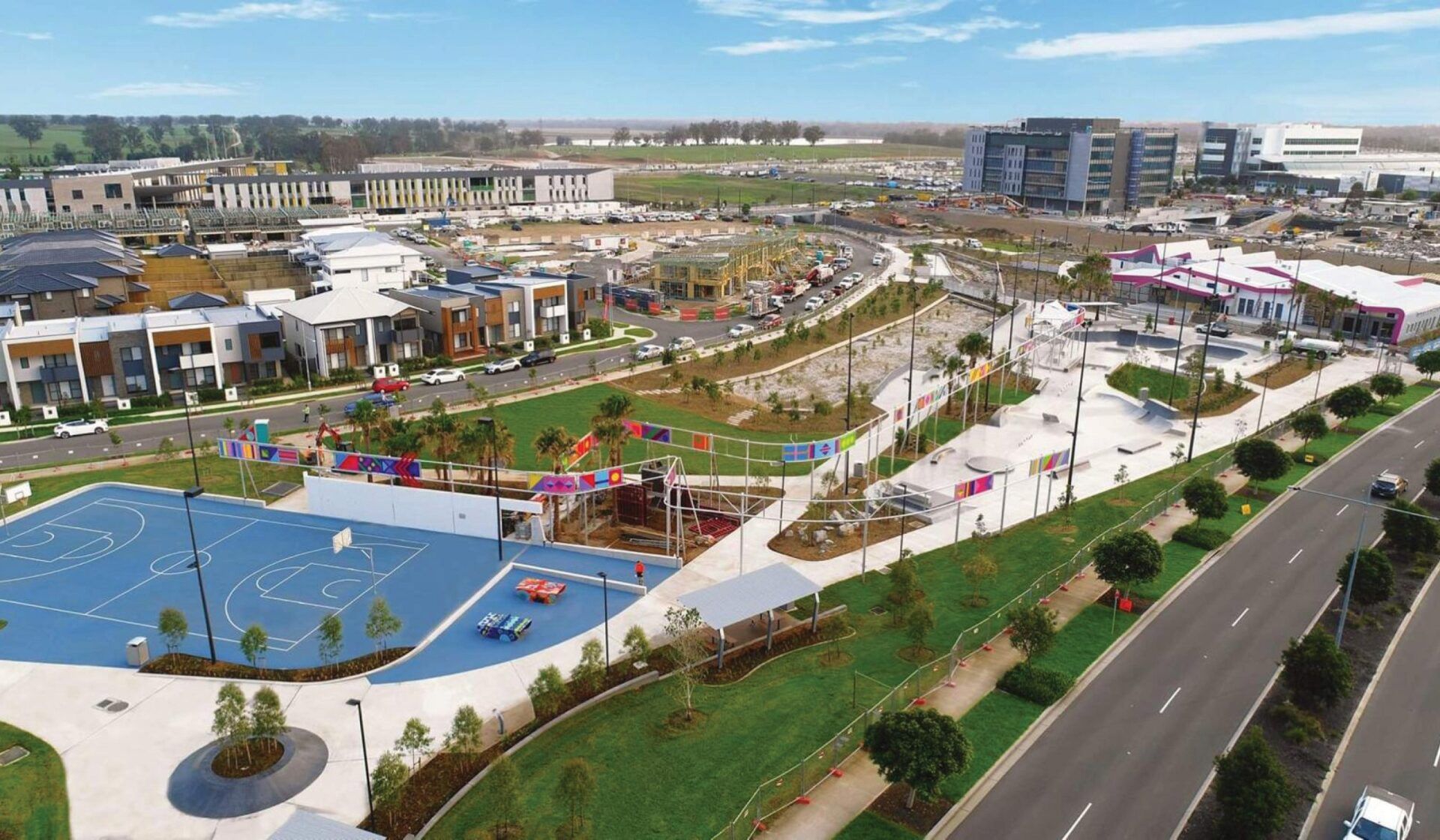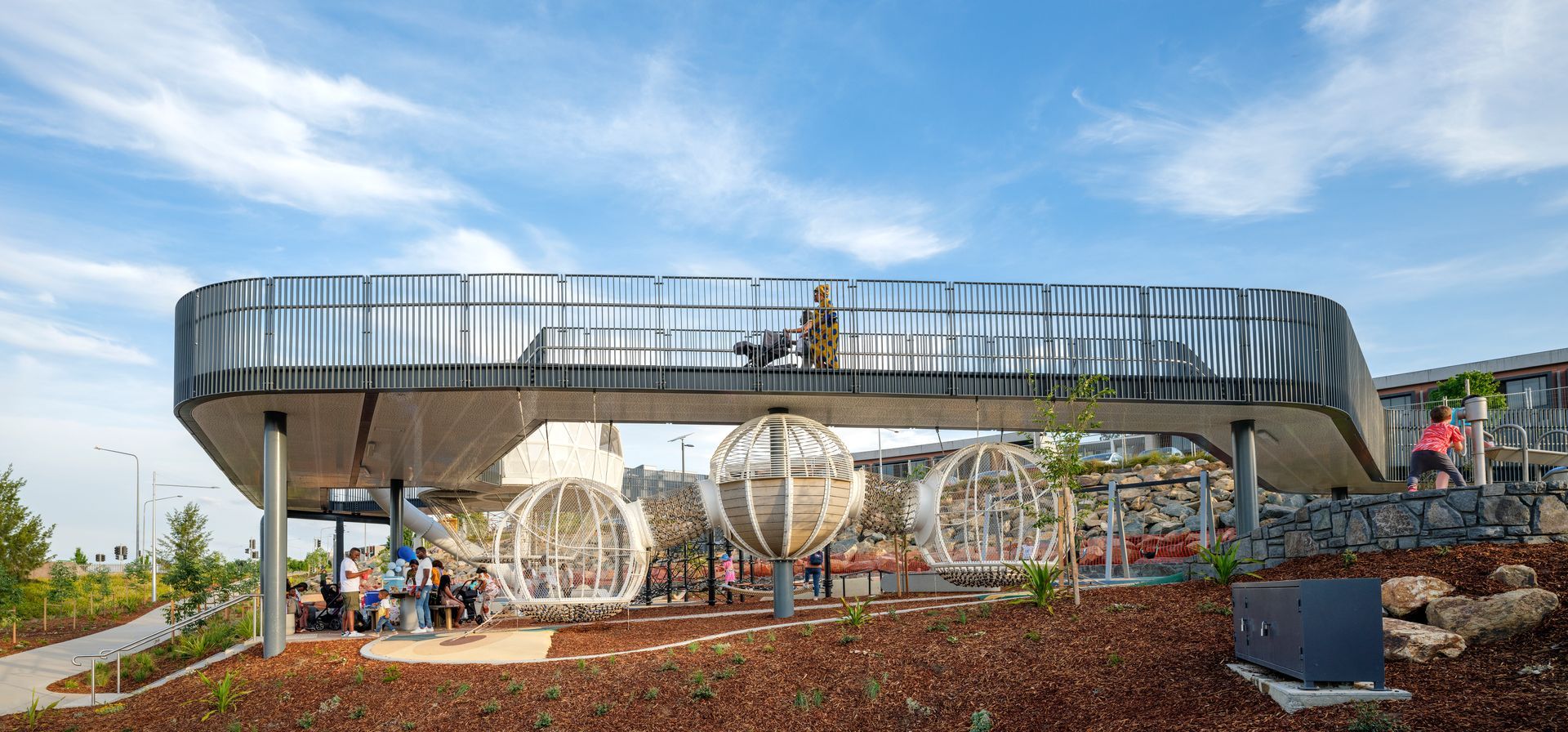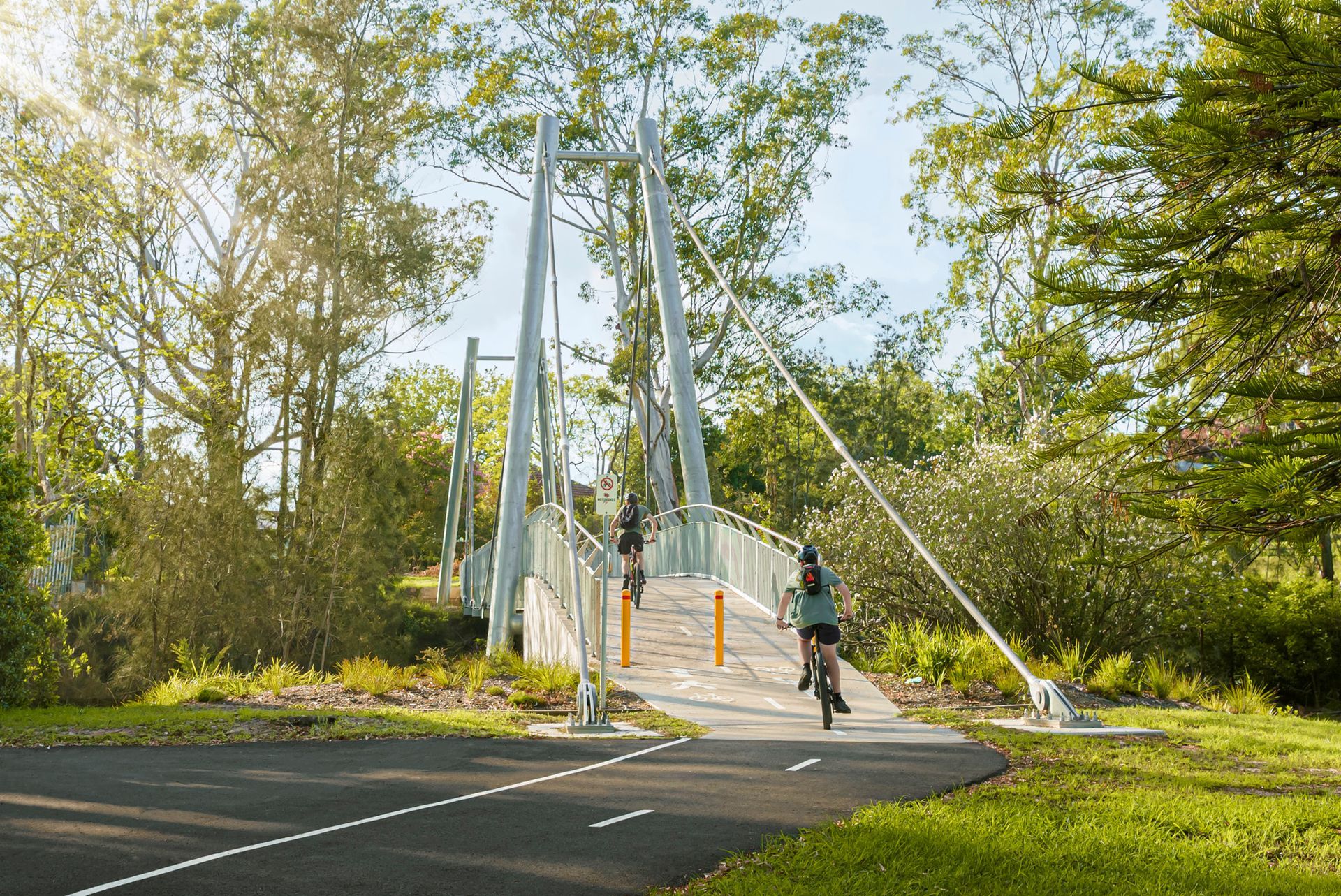Building on today. Stimulating tomorrow.
From the long-term influences of COVID-19 and climate change, to the role of international borders in kick-starting the struggling apartment sector, we explore Australia’s residential property market with Simon Basheer, National President, Urban Development Institute of Australia.


If anyone understands the Australian property market, it’s Simon Basheer. During a 35-year career, he’s been personally involved in some of Australia’s largest masterplanned communities with both Delfin and Lend Lease. For more than two decades he’s also been an active member of the Urban Development Institute of Australia, serving as both a Councillor and NSW State President, before becoming UDIA National President in November 2019. We were delighted to catch up with Simon recently to get his thoughts on the Australian property market as it stands today, and where it’s likely to head tomorrow.
FWD>Thinking: It’s great to speak with you, Simon. How would you summarise the residential property market in Australia right now?
SIMON BASHEER: There are three main factors driving the market right now. Sustained low interest rates, heightened activity from first home buyers and robust new home construction motivated by Federal and State Government stimulus.
There’s no doubt the Federal Government’s HomeBuilder initiative has been a stellar public policy success – it’s seen greenfield land sales and lot production double since its inception. It has fulfilled its purpose in driving jobs, wages and activity as Australia sought to mitigate the economic effects of COVID-19. HomeBuilder is a great example of targeted stimulus by the Government at a time when it was greatly needed.
Of course, with the rapid increase in sales activity and absorption of existing and newly developed stock, one of the key focus areas for the industry now is to replenish the supply side of the equation. We’ve seen price rises in the established and new housing detached markets over the past 6-9 months as activity rebounded. Supply pipelines and the efficiency of planning regimes to address this must be a major focus now with the public and private sectors working collaboratively to ensure affordability remains within reach for new home purchasers.
FWD: Where are we currently seeing the strongest growth?
SB: There’s a clear bifurcation in the market right now between greenfield and apartment housing. Detached housing production and resultant sales have surged thanks to stimulus and low interest rates. The greenfield land and housing market is strong with sales made over the past 9 months set to drive housing and employment activity well into 2022.
However, new apartment sales activity and production – often so intrinsically tied to immigration and net overseas migration – has stalled and will likely remain subdued until after Australia can successfully reopen its borders. This sector didn’t benefit as much as the detached housing and renovation markets driven by the HomeBuilder stimulus. Addressing this issue demands a coherent, robust plan from government to ensure Australia is able to restore net overseas migration to pre-pandemic levels as a minimum, given immigration and population growth are so crucial to the nation’s economic growth and productivity.

FWD: What are your thoughts on the long-term impact of COVID-19?
SB: The biggest changes induced by COVID-19 are most likely to be geographic, in several ways. First, we’ve seen both a reduction in the number of people moving to big cities and a drift of people from big cities to regional areas. People are able to leverage technology to work remotely and this is likely to remain as a trend influencing where people choose to live.
But even for people living in our major cities, they’re likely to want to spend a balance of their time in the office and working from home, or close to home. This will require us all to think differently about how we develop our cities, precincts and the mix of offerings available.
House and apartment designs always evolve. However, with the influence of COVID-19, developers and builders are placing more and more emphasis on innovative open space planning providing a range of social and community options. They’re also looking to incorporate design features that provide more flexible living and working spaces within homes in response to these changing user needs.
CBDs will always play their part in the fabric of our cities, however in a post-COVID world, more flexible living and working options will continue to emerge.
FWD: Long before COVID-19, we were already seeing a greater and greater focus on sustainable development. How is this likely to shape the market in the next few years?
SB: True sustainability spans economic, social and environmental contributions to society. The economic piece is, notionally, the easy bit: allowing an industry central to the nation’s economic endeavours to prosper and thrive, and give people easier access to the dreams of home ownership.
The property industry is a huge driver of the economic prosperity of this country contributing to 7.5% of economic output with the industry employing north of 750,000 people and over 1 million people if you add ancillary infrastructure related works. Hence a thriving and economically sustainable property industry really is critical for Australia.
Social sustainability is integral to the harmony of any community and city. Increasingly, there is a focus on healthier lifestyles and a sense of belonging within society. Our industry clearly recognises this as a critical community need and it’s at the forefront of masterplanning and urban design, whether it be at a small-scale development connecting to existing social infrastructure right through to large-scale masterplanned inner urban or greenfield communities. Good developers understand the value of investing in environmentally-sensitive designs, ranging from the building products they deploy in construction, to the energy and water efficiency of the homes they build, to the green space that inhabits the communities they create. With the focus on climate change, carbon neutral aspirations and growing community expectations relating to environmental issues, the development industry is continually innovating in this area. Not only because it’s the right thing to do, but because it’s essential for business success.

FWD: What other trends are likely to influence the property market in the coming 12-48 months?
SB: One of the biggest will be the Government’s ability to successfully reopen our international borders and restore pre-pandemic immigration and population growth levels. These are intrinsic to the nation’s economic output and trajectory; but they’re also crucial to housing markets. The focus in the short-term on skilled migration and overseas students will be of immediate importance.
No sector is more exposed to net overseas migration than the apartment market. Right now, a contraction is underway in the sales of apartments, and construction of new multi-unit projects. The Government has done a superb job stimulating greenfield housing markets, but we all need to keep a close watch on apartment markets to ensure conditions are ripe for this critical sector to succeed, and also for development pipelines to be replenished in response to the likely increase in demand when international borders re-open.
Ultimately, we need to build sustainable supply pipelines that keep pace with short, medium and long-term population projections. Maintaining a balance between supply and demand is essential to improving housing affordability.
The other element of affordability is the cost base of new housing, and there’s an overwhelming case for tax reform to reduce the burden on homebuyers. The imposition of taxes, charges and levies can account for as much as 40 percent of the cost of new housing. In our view, a wholesale, holistic effort to transform federal, state and local taxes needs to be on the agenda.
One other change induced by COVID-19, which I touched upon earlier, is that balance between home and office work. This will demand new ways of living that potentially sees the design of new housing that provides dedicated capacity for people to work from home, as well as how new town centres and precincts are designed, and how established ones evolve.

FWD: Heading towards 2025, and beyond, what will be the keys to success for Australia’s community-builders?
SB: By 2025, Australia should have returned to a normalised economic, immigration and population growth trajectory – but we risk being stuck with an antiquated system of servicing growth. The Commonwealth has stepped up superbly during the pandemic to stimulate activity, ease access to home ownership and provide the stimulus needed to re-kick start things when the COVID-19 pandemic hit. However, there’s still a substantial gap between those goals and the ability of all tiers of government to work together to ensure there’s an efficient operating and delivery environment to deliver much needed supply of new housing, including social and affordable housing, to the marketplace.
The bulk of states still run inefficient planning systems that add delays and costs to projects that are ultimately borne by new homebuyers. We will need a tighter, more coherent and disciplined capacity across governments to future-proof our cities and regions, unlock land supply, ensure enabling infrastructure can be funded and delivered on time, and harness the benefits of working in partnership with the private sector.
National Cabinet, the Centre for Population and the National Housing Finance and Investment Corporation all need to do the work to deliver more effective medium and long-term strategic planning – and ensure there is follow through from the states, territories and local government in achieving the required outcomes.
FWD: How important is well-designed, publicly-accessible community space to today’s property buyers?
SB: Increasingly there is a greater focus on healthier lifestyles and a sense of belonging within society. Well-designed public open spaces are essential in creating the strong sense of belonging that communities desire. They promote formal and informal social interaction, stimulate activity and provide a platform for a range of commercial, retail and employment opportunities – all of which are important to create a harmonised society.
FWD: Just finally Simon, how is UDIA feeling about the Industry’s future right now? Bullish? Excited? Cautious? ‘All of the above’?
SB: All of the above. Australia is currently well placed in the detached housing market as a result of the strong activity over the past 9 months on the back of record low interest rates, government stimulus and a recovery in consumer confidence. However, we’re concerned that the lack of a pipeline in the apartment market may cause an undersupply in future years, both in this sector and the overall market especially at a time when Australian borders are likely to reopen. Both the private and government sectors need to work collectively to ensure this segment of the industry recovers quickly to service our CBDs and inner urban areas.
Another key factor is housing affordability. Australia still hasn’t cracked the nut of delivering a sustainable supply of new housing to meet demand. We need governments at all levels to better connect their efforts to increase the effectiveness of planning systems, boost supply which will ultimately improve affordability.
It’s essential that a focus is placed on good medium and long-term strategic planning to prepare ourselves for the reality of population growth, make our cities more liveable, better plan and deliver enabling infrastructure and create durable housing supply pipelines.
Finally, the priority right now remains on a robust plan from government to ensure Australia is able to restore net overseas migration to pre-pandemic levels. That’s going to be crucial to the nation’s economic growth and productivity.
More from Fleetwood Files.
Explore
Certifications
Environmental Management : ISO14001
Quality Management : ISO 9001
OHS Management : ISO 45001
All Rights Reserved | Fleetwood Urban | Privacy Policy





